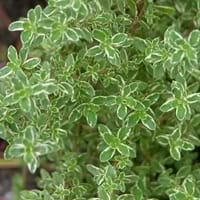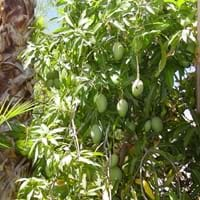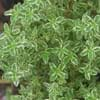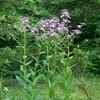Life Span
Perennial
Perennial
Origin
Asia, Europe
Hybrid origin, India, Melanesia
Types
Elfin Thyme, Pink Chintz Thyme, Lime Thyme, White Moss Thyme, Lavender Thyme, Silver Needle Thyme
Alphonso, Florigon, Jakarta
Habitat
Rocky areas
Subtropical climates, Tropical areas
USDA Hardiness Zone
6-9
10-15
AHS Heat Zone
9-1
Not Available
Sunset Zone
1a, 1b, 2a, 2b, 3a, 3b, 4, 5, 6, 7, 8, 9, 10, 11, 12, 13, 14, 15, 16, 17, 18, 19, 20, 21, 22, 23, 24
H1, H2, 23, 24
Habit
Cushion/Mound-forming
Oval or Rounded
Minimum Width
Not Available
Flower Color
Crimson, Lavender, Pink, White
Yellow, Red
Flower Color Modifier
Unknown
Bicolor
Fruit Color
Not Available
Yellow, Gold
Leaf Color in Spring
Green
Dark Green, Bronze
Leaf Color in Summer
Gray Green
Dark Green, Bronze
Leaf Color in Fall
Gray Green
Dark Green, Bronze
Leaf Color in Winter
Gray Green
Light Green
Leaf Shape
Tiny
Acuminate
Plant Season
Summer
Spring, Summer, Fall, Winter
Sunlight
Full Sun, Part sun
Full Sun
Growth Rate
Medium
Medium
Type of Soil
Loamy, Sandy
Loam, Sand
The pH of Soil
Neutral, Slightly Alkaline
Acidic, Neutral, Alkaline
Soil Drainage
Well drained
Well drained
Bloom Time
Fall, Spring, Summer, Winter
Early Spring, Winter, Late Winter
Tolerances
Drought
Drought
Where to Plant?
Container, Ground
Ground
How to Plant?
Seedlings, Stem Planting
Grafting, Seedlings, Stem Cutting, Transplanting
Plant Maintenance
Medium
Medium
Watering Requirements
Do not water frequently, Does not require lot of watering, Requires watering in the growing season, Water occasionally
Over-head watering
In Summer
Lots of watering
Lots of watering
In Spring
Moderate
Moderate
In Winter
Average Water
Average Water
Soil pH
Neutral, Slightly Alkaline
Acidic, Neutral, Alkaline
Soil Type
Loamy, Sandy
Loam, Sand
Soil Drainage Capacity
Well drained
Well drained
Sun Exposure
Full Sun, Part sun
Full Sun
Pruning
Prune for shortening long shoots, Prune if you want to improve plant shape, Prune lower leaves, Requires extensive pruning
Remove damaged leaves, Remove dead branches, Remove dead leaves
Fertilizers
All-Purpose Liquid Fertilizer
All-Purpose Liquid Fertilizer
Pests and Diseases
Alternaria leaf blight, Aphids, Botrytis collar rot, Rhizoctonia Root Rot, Spider mites
Red blotch
Plant Tolerance
Drought
Drought
Flowers
Yes
Insignificant
Flower Petal Number
Not Available
Single
Fragrant Bark/Stem
Yes
No
Foliage Texture
Fine
Medium
Foliage Sheen
Matte
Glossy
Attracts
Butterflies
Birds
Allergy
Diarrhea, Skin irritation
bullous cheilitis, contact allergic dermatitis
Aesthetic Uses
Beautification, Showy Purposes, Used for decorating walls, fences, gates, hedges, etc.
Showy Purposes
Beauty Benefits
Not Available
Acne, Promotes Healthy Hair, Removes dandruff
Environmental Uses
Air purification
Air purification, Food for animals, Food for birds, Shadow Tree
Medicinal Uses
Arthritis, Bronchitis, Chronic fatigue, Cough, Gastritis, Hair Loss, Insomnia, Kidney problems, Muscle Pain, Skin irritation, Snoring, Sore throat, Stomach pain, Swelling
Digestion problems, Eye Problems, Nutritive
Part of Plant Used
Whole plant
Whole plant
Other Uses
Air freshner, Cosmetics, Economic Purpose, Employed in herbal medicine, Oil is used in perfume, soaps, creams, etc., Showy Purposes, Used As Food, Used as Ornamental plant, Used for fragrance
Added to salads, Culinary use, Food for animals, Grown for shade
Used As Indoor Plant
Yes
Insignificant
Used As Outdoor Plant
Yes
Yes
Garden Design
Container, Edible, Herb, Rock Garden
Container, Edible, Feature Plant, Fruit / Fruit Tree, Tropical
Botanical Name
Thymus vulgaris
MANGIFERA indica 'Manila'
Common Name
Thyme
Mango, Manila Mango
In Hindi
अजवायन के फूल
आम
In Spanish
Tomillo
Mangifera indica
In Greek
θυμάρι
Manila mango
In Portuguese
Tomilho
Mangifera indica
In Polish
Tymianek
Mango indyjskie
In Latin
Thymum
Manila mango
Phylum
Magnoliophyta
Magnoliophyta
Class
Magnoliopsida
Magnoliopsida
Order
Not Available
Sapindales
Family
Labiatae
Anacardiaceae
Clade
Not Available
Angiosperms, Eudicots, Rosids
Tribe
Not Available
Not Available
Subfamily
Not Available
Not Available
Season and Care of Thyme and Manila Mango
Season and care of Thyme and Manila Mango is important to know. While considering everything about Thyme and Manila Mango Care, growing season is an essential factor. Thyme season is Summer and Manila Mango season is Summer. The type of soil for Thyme is Loamy, Sandy and for Manila Mango is Loam, Sand while the PH of soil for Thyme is Neutral, Slightly Alkaline and for Manila Mango is Acidic, Neutral, Alkaline.
Thyme and Manila Mango Physical Information
Thyme and Manila Mango physical information is very important for comparison. Thyme height is 10.20 cm and width Not Available whereas Manila Mango height is 910.00 cm and width 460.00 cm. The color specification of Thyme and Manila Mango are as follows:
Thyme flower color: Crimson, Lavender, Pink and White
Thyme leaf color: Green
Manila Mango flower color: Yellow and Red
- Manila Mango leaf color: Dark Green and Bronze
Care of Thyme and Manila Mango
Care of Thyme and Manila Mango include pruning, fertilizers, watering etc. Thyme pruning is done Prune for shortening long shoots, Prune if you want to improve plant shape, Prune lower leaves and Requires extensive pruning and Manila Mango pruning is done Remove damaged leaves, Remove dead branches and Remove dead leaves. In summer Thyme needs Lots of watering and in winter, it needs Average Water. Whereas, in summer Manila Mango needs Lots of watering and in winter, it needs Average Water.





